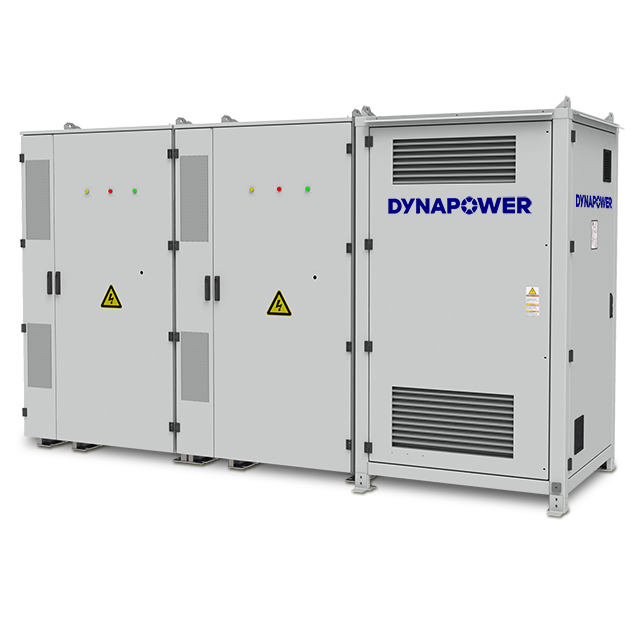As pressure intensifies to rid the world of harmful greenhouse gases, the transportation industry is undergoing a massive shift—and for good reason. The transportation sector in the U.S. emits the largest amount of greenhouse gases (28%), and its transition to alternative fuels is imperative to the slowing of catastrophic climate change. Gas and diesel-powered cars, trucks, ships, and planes are quickly being replaced by ones powered by electricity to combat the climate crisis.
Dynapower is at the heart of this transition to a more sustainable future, with power electronics and battery energy storage systems to power up e-mobility across the world.
E-mobility is a blanket term for the use of electric-powered technologies for transportation as opposed to relying on gas and fossil fuels. E-mobility uses external charging from electrical power sources, like the power grid and renewable energy sources.

E-mobility is comprised of fully electric vehicles, driverless cars, hydrogen-fueled vehicles, hybrids, and plug-in hybrids. Any vehicle that moves via electricity falls under the umbrella of e-mobility.
Falling battery prices and breakthroughs in energy storage technologies have accelerated electrification of transportation. Numerous car manufacturers—from Volvo to GM—have announced their fleets transitioning to 100% electric in the next two decades or less.
Simply having electric vehicles is not enough. The effectiveness of emission-free or emission-reduced driving is influenced by the energy source used to power the vehicles. Energy harvested from wind and solar or even green hydrogen can make EV vehicles more impactful than ones fueled by electricity derived from fossil fuel-burning resources, like coal and natural gas.
Dynapower’s role in the e-mobility movement
Dynapower is proud to play a part in the story of e-mobility—specifically in the area of battery energy storage. Essentially, Dynapower in conjunction with its partners, designs and builds energy storage systems that help power EV charging stations used to facilitate e-mobility across the globe with safe and reliable electric fueling.
With storage-enabled EV charging becoming more widely adopted as a means of avoiding transmission upgrades and lowering costs to rapidly deploy charging, Dynapower has a variety of energy solutions that are built around reliability, safety, and efficiency.
“In many cases, the grid can’t support the amount of energy that goes into EV chargers, and upgrades to the grid would be too expensive—so it’s less costly to use batteries,” said Dynapower’s E-Mobility Segment Leader Richard Morin. “Also, being able to lower utility demand charges makes battery energy storage very attractive for making the economics work for installing EV charging stations.”

Dynapower equipment is built for EV charging applications anywhere from 250kW projects all the way up to 5 and 10MW projects. Dynapower works with battery suppliers to bring customers fully developed energy storage systems for their EV charging stations.
“The batteries can hold a lot of energy in a small space,” Morin added. “The ones we use are very safe and energy dense.”
Dynapower’s two main solutions for energy storage for EV charging stations are the MPS-i Energy Storage System and CPS-i Energy Storage System. This means we can serve smaller application sizes such as ones found at your local fueling stations as well as larger ones associated with fleet charging applications for delivery services. And with our DPS-500 DC-to-DC Converter, any one of those installations could utilize power generated via solar panels to power the EV charging station—making it a fully renewable system.
“We’ve deployed battery energy storage systems for the charging of planes, trains, and cars—but the rate of change and the need for widescale charging deployment is accelerating our work,” Morin added.
Dynapower has worked with customers who utilize electricity from the grid and renewable sources—along with an energy storage system—to save money and sell power back to the grid.
“Operators of battery storage enabled EV charging not only have the opportunity to make money off fueling of EV vehicles, but selling power into the energy markets at the appropriate times,” said Morin.
And, just as with our rectifiers, Dynapower’s energy storage systems are built around efficiency, safety, and reliability.
“The power electronics is the glue to it all,” said Morin. “We’re now partnering with charging manufacturers to create a fully integrated system where they provide chargers and we provide the battery storage.”
For years, Dynapower has specialized in installing microgrids—which carries over to our work in e-mobility. We’re proud to be playing a role in the story of e-mobility by leveraging our trusted equipment to allow for the adoption of widespread EV charging.
More about the MPS-i and CPS-i
The MPS-i is a behind the meter energy storage system that combines Dynapower’s highly efficient UL 1741 SA certified MPS-125 inverter with Li-Ion batteries in a temperature controlled NEMA 3R-rated battery enclosure. This system also features Dynapower’s proprietary Dynamic Transfer™ which, in the event of a grid disturbance, seamlessly switches a facility from grid-tied to battery backup power.

The CPS-i is a fully-integrated front of the meter energy storage system that combines Dynapower’s efficient UL 1741 SA listed CPS-1500 or CPS-3000 with Li-Ion batteries in a temperature controlled NEMA UL 3R / IP 54 (outdoor) rated battery enclosure with all associated controls. Multiple CPS-i systems can be paralleled together to meet the sizing needs of any front of the meter installation.
